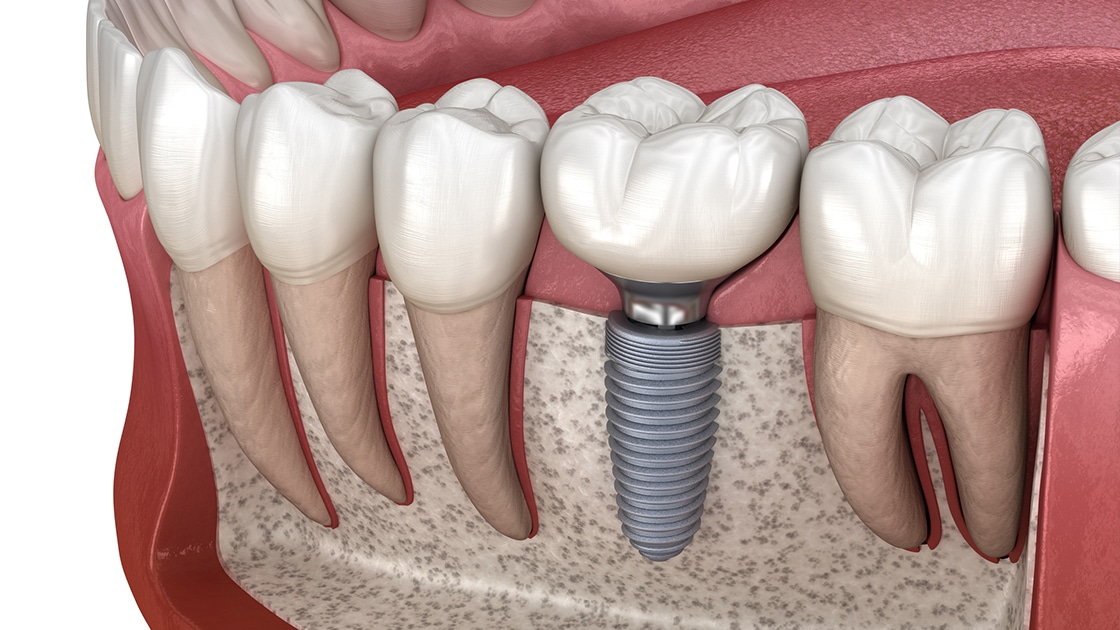5 Simple Techniques For Dental Sense
Table of ContentsDental Sense Fundamentals ExplainedAll About Dental SenseDental Sense for BeginnersThe Basic Principles Of Dental Sense
are clinical tools surgically implanted right into the jaw to bring back a person's ability to chew or their look. They offer support for artificial (fake) teeth, such as crowns, bridges, or dentures. When a tooth is lost as a result of injury or disease, an individual can experience difficulties such as rapid bone loss, malfunctioning speech, or changes to eating patterns that lead to discomfort.Dental dental implant systems contain a dental implant body and dental implant abutment and may also consist of an abutment fixation screw. Front tooth filling. The dental implant body is surgically inserted in the jawbone instead of the tooth's root. The oral implant abutment is normally connected to the implant body by the joint fixation screw and extends with gums right into the mouth to sustain the connected man-made teeth
(https://www.intensedebate.com/people/dentalsense1)Structure of The Oral Implant System picking dental implants, talk to your dental provider concerning the possible advantages and dangers, and whether you are a candidate for the procedure. Things to take into consideration: Your overall health and wellness is a vital consider determining whether you are a great prospect for oral implants, the length of time it will require to heal, and how much time the implant may stay in area.
Smoking might impact the healing procedure and decrease the long-term success of the implant. The recovery procedure for the dental implant body might take several months or longer, throughout which time you generally have a short-term joint in place of the tooth. the dental implant treatment: Thoroughly adhere to the dental health directions provided to you by your oral copyright.
The Dental Sense Diaries
Implant failure can lead to the requirement for another procedure to take care of or change the dental implant system. Brings back the capability to chew Recovers cosmetic appearance Assists maintain the jawbone from diminishing as a result of bone loss Protects the wellness of the surrounding bone and gum tissues Assists keep nearby (nearby) teeth stable Improves top quality of life Damages to surrounding natural teeth during implant placement Injury to the surrounding cells throughout surgical procedure, such as sinus perforation Injury throughout surgery (for instance, crack of surrounding jawbone) Inadequate function, such as feeling like the teeth do not attack together typically An experience that the tooth is loosened or turning in position arising from a joint screw loosening Implant body failure (looseness of the implant body) as a result of systemic infection, which may be a lot more most likely in individuals with uncontrolled diabetics issues due to regional infection in bone and gums supporting the implant body as a result of postponed healing, which may be more probable in people that smoke Difficulty cleaning the gums around the implant, causing poor dental hygiene Without treatment periodontal disease Post-surgical tingling because of nerve impingement or damages Constantly notify health care companies and imaging technicians that you have oral implants before any magnetic vibration imaging (MRI) or x-ray treatments.
FDA is not knowledgeable about any type of damaging events reported for MRI or x-ray procedures with oral implants. Dental implants systems are typically made of materials that adhere to worldwide consensus criteria of the International Company for Standardization (ISO) or ASTM International. These requirements have details of what makes a risk-free material.

A dental implant is a framework that replaces a missing out on tooth. With screw-like gadgets, the specialist inserts an implant into the jawbone, and it acts as an anchor for a synthetic tooth, called a crown.
The Ultimate Guide To Dental Sense
Some people are not qualified for oral implant surgical treatment. It is for dental surgeons to run on people with: severe illnessuncontrollable metabolic diseasebone or soft cells disease or infectionIf these issues are settled, a person can have the surgical treatment. In, oral cosmetic surgeons avoid operating people with: If individuals with any one of the above go through oral implant surgical procedure, there is a higher risk of the implant falling short.

Oral dental implant surgical procedure is an individualized process. Give you time to recover. Attach the message and final crown, bridge or denture.
Next, your surgeon will thoroughly put the oral implant right into your jaw. Your surgeon will certainly reposition your periodontals and close the laceration with stitches. If your implant is near the front of your mouth, your dental practitioner will check my blog make a short-lived tooth for you to use until you recover. That way, you won't have a void in your smile while you recover.
Dental Sense - Truths
Your provider can inform you what to expect in your circumstance. During the healing phase, your jawbone should fuse to the dental implant. This procedure, called osseointegration, is essential for stability and lasting success. This process can take anywhere from 3 to nine months. In some instances, it may take much longer.
Once your implant heals, your dental professional can affix the joint (tiny adapter article) and your last repair (crown, bridge or denture). This normally takes regarding one hour to complete and may require a 2nd small surgical treatment. You should not feel any discomfort during your dental implant treatment since your service provider will certainly use medicine to numb your gum tissues.